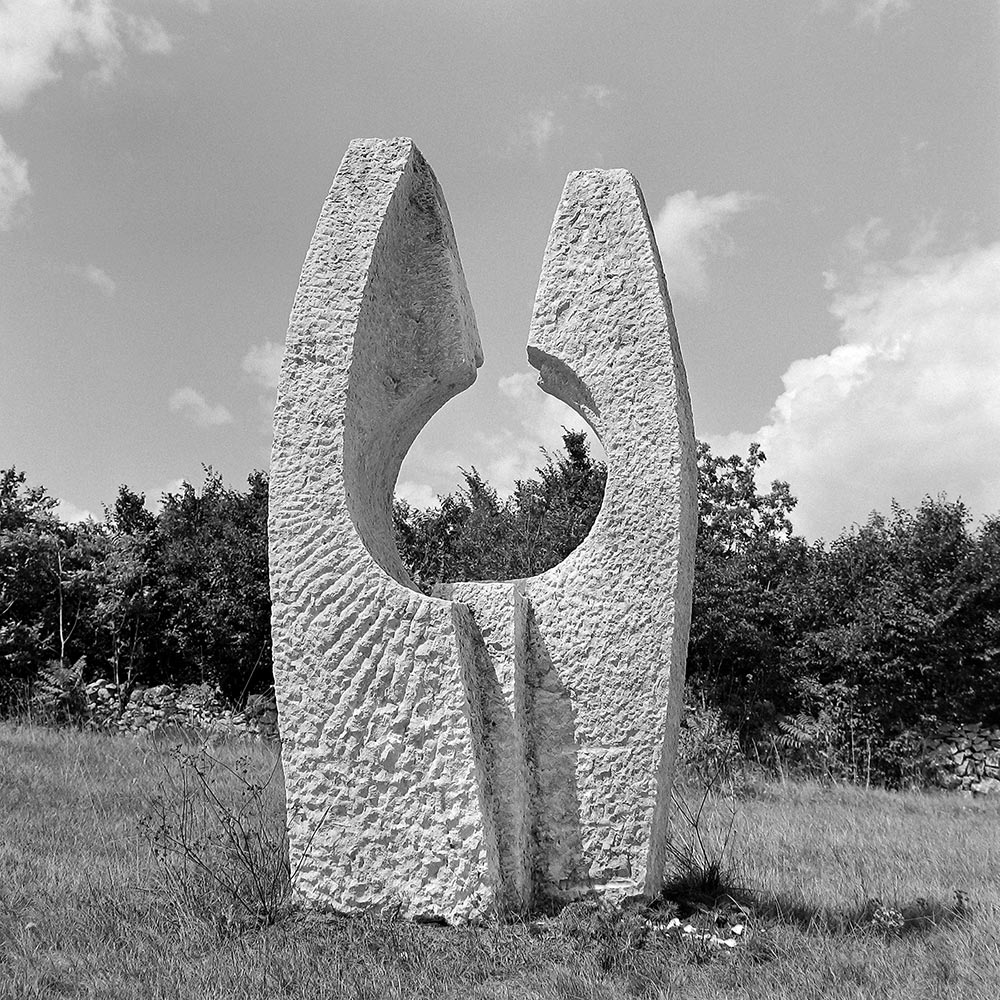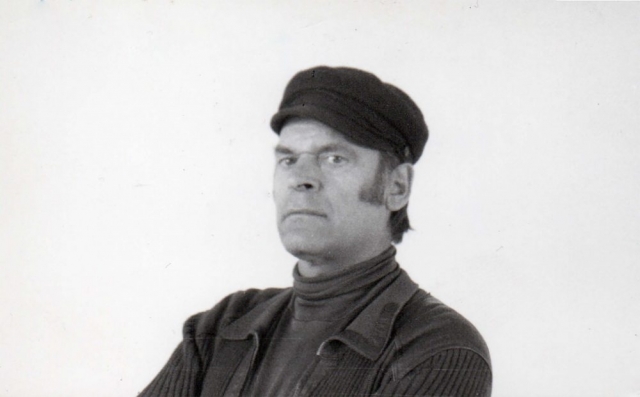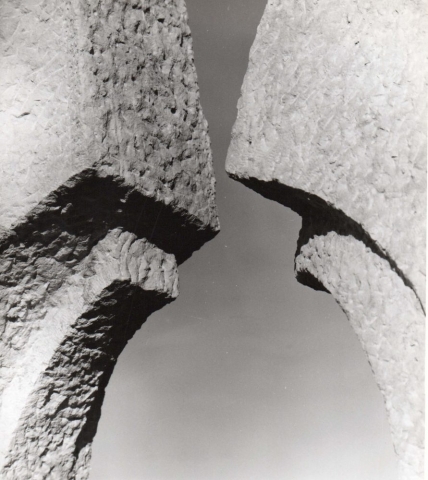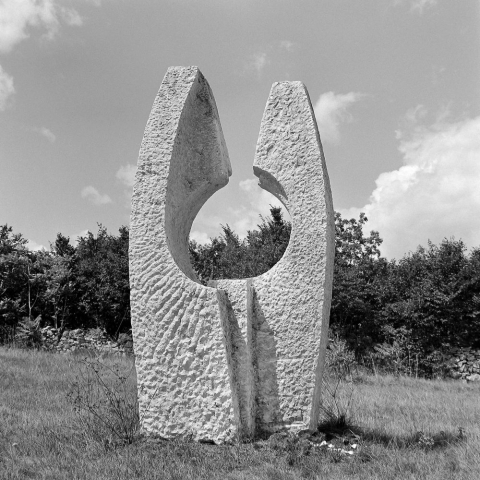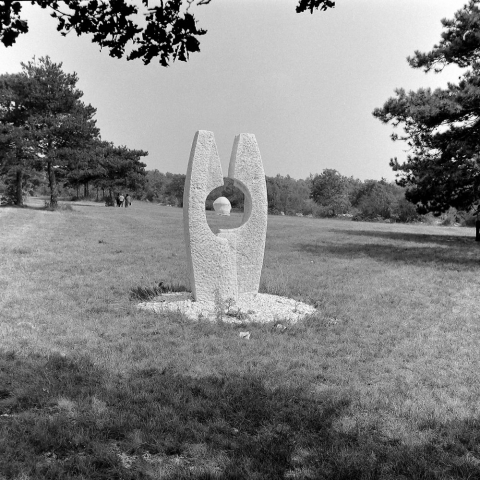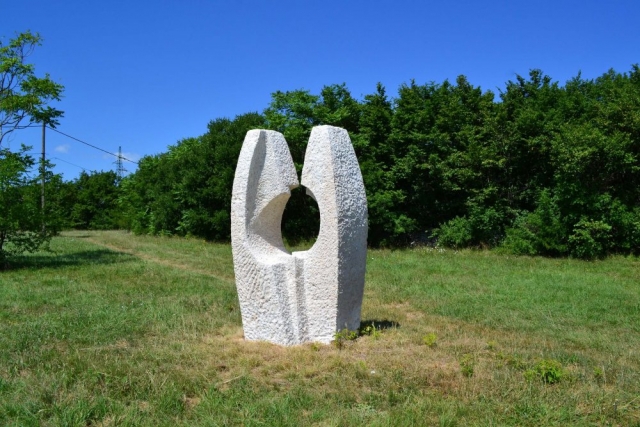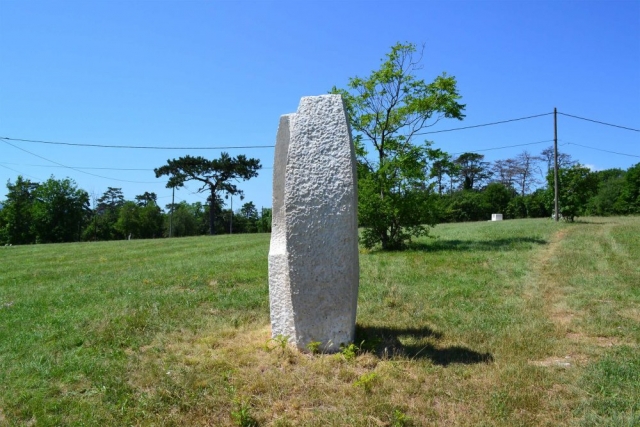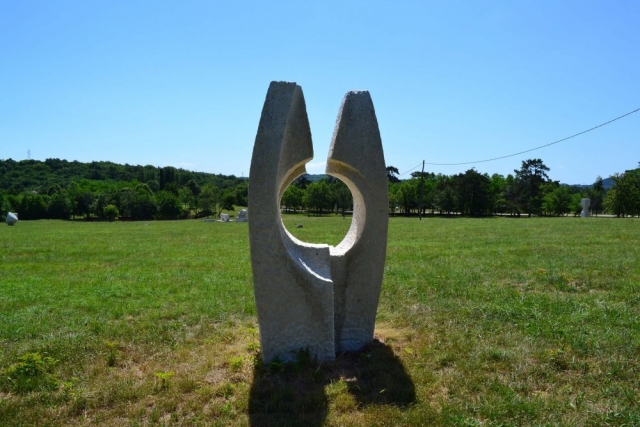
He was born in Trento, Italy, in 1925. He was a sculptor without classical art education, he studied sculpture in various studios and workshops and in Venice, where he attended the Secondary School of Arts for some time. In 1944, he was captured and taken to Austria. During 1948 and 1949, he resided in Yugoslavia, where he worked as a designer for books and newspapers. After returning to Italy in the early 1950s, he engaged in ceramics. In the first half of the 1960s, he began experimenting by introducing new techniques in ceramic processing, while at the same time dedicating himself to drawing and painting. From the second half of the 1960s, he began using new materials, metal, stone, concrete and wood, and by introducing new sculpture motifs, archetypal, clean and clear forms, he got close to abstract art.
Among Ceschia’s most significant works are the monumental sculptures and medals he created in the 1970s and 1980s.
Luciano Ceschia participated in several sculpture symposia. He exhibited in many solo and group exhibitions, and his work “The Great Door of Hiroshima” was presented at the 31st Venice Bienniale of Modern Art (1962), where he received the award from the Ministry of Industry and Trade for ceramics.
He died in Udine (Italy) in 1991.
He took part in the Mediterranean Sculpture Symposium in 1971.
Title: Cypresses
Year: 1971
Dimension: h.w.l. 255 x 136 x 70 cm
Location: Park of sculptures Dubrova
